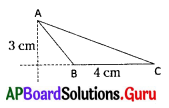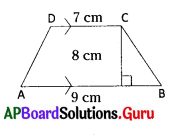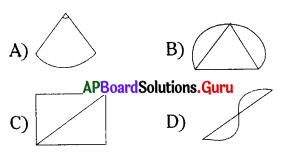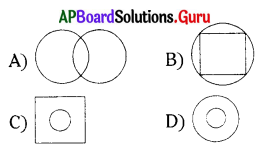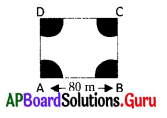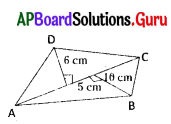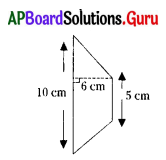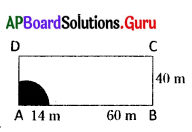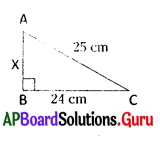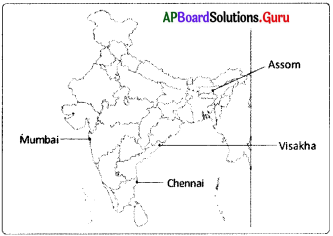Practice the AP 9th Class Social Bits with Answers Chapter 22 Women Protection Acts on a regular basis so that you can attempt exams with utmost confidence.
AP State Syllabus 9th Class Social Bits 22nd Lesson Women Protection Acts with Answers
Choose the correct answer.
Question 1.
Girls are hesitating to go to
A) Schools
B) Offices
C) Temples
D) None of the above
Answer:
A) Schools
Question 2.
In 1989, the UNO proposed an international children charter on which countries have signed.
A) 120
B) 191
C) 171
D) 193
Answer:
B) 191
![]()
Question 3.
Below years of age is all children without gender discrimination.
A) 15
B) 16
C) 18
D) 13
Answer:
C) 18
Question 4.
Marriage age of a male
A) 15
B) 16
C) 18
D) 21
Answer:
D) 21
Question 5.
HelpLine 1800 425 2908 is known as Help Line.
A) Bhumika
B) Soundarya
C) Raasi
D) Archana
Answer:
A) Bhumika
Question 6.
Devadasi comes under
A) Activities against the law
B) Sexual Assault
C) Labourers
D) Sadistic pleasure
Answer:
B) Sexual Assault
![]()
Question 7.
The punishment to the brothel housekeepers (imprisonment) is
A) 1 – 2
B) 3 – 4
C) 2 – 3
D) 10
Answer:
C) 2 – 3
Question 8.
Our Constitution provides the right to live in a dignified manner to all the
A) Children
B) Women
C) Men
D) Citizens
Answer:
D) Citizens
Question 9.
Violence leads to more and more
A) violence
B) energy
C) control
D) none of the above
Answer:
A) violence
Question 10.
Humiliation comes under
A) Sexual abuse
B) Verbal and emotional abuse
C) Physical abuse
D) Mental abuse
Answer:
B) Verbal and emotional abuse
![]()
Question 11.
Before the law, all are
A) Different
B) Equal
C) Unequal
D) None of these
Answer:
B) Equal
Question 12.
The punishment for sexual assault and torturing is
A) 20 years
B) 10 years
C) 14 years
D) 5 years
Answer:
A) 20 years
Question 13.
The incharge to avoid child marriages at the village level is
A) Tehsildar
B) M.R.O
C) Panchayat secretary
D) Collector
Answer:
C) Panchayat secretary
Question 14.
Violation of children and women is in various forms.
A) Rights
B) Torture
C) Prostitution
D) None of these
Answer:
A) Rights
Question 15.
Who provide the free legal services?
A) Subordinate courts
B) Municiff courts
C) Lok Adalats
D) Judicial courts
Answer:
C) Lok Adalats
![]()
Question 16.
Verbal and emotional abuse comes under ……………. violence.
A) Torture
B) Domestic violence
C) Domestic information
D) Respect
Answer:
B) Domestic violence
Question 17.
Which of the following is a people’s court?
A) Sessions court
B) Taluka court
C) Municiff court
D) Lok Adalat
Answer:
D) Lok Adalat
Question 18.
Lok Adalats were established in
A) 1982
B) 1967
C) 1976
D) 1970
Answer:
C) 1976
Question 19.
The immoral trafficking act was implemented in
A) 1970
B) 1956
C) 1980
D) 1990
Answer:
B) 1956
Question 20.
How many countries were signed on International children charter?
A) 191
B) 150
C) 200
D) 193
Answer:
A) 191
![]()
Question 21.
Child marriage means, marriage was held below the age of
A) 21-18
B) 31 – 35
C) 56 – 50
D) None of these
Answer:
A) 21-18
Question 22.
What is the punishment of violation of Dowry Prohibition Act?
A) 5 years imprisonment 15 thousand rupees fine
B) 7 years imprisonment 20 thousand rupees fine
C) 10 years imprisonment 50 thousand fine
D) 2 years imprisonment 20 thousand fine
Answer:
A) 5 years imprisonment 15 thousand rupees fine
Question 23.
What is the punishment to the male person to the child marriage?
A) 2 years imprisoned, 1 lakh fine
B) 5 years imprisoned, 50,000 fine
C) 7 years imprisoned, 25,000 fine
D) 10 years imprisoned, 15,000 fine
Answer:
A) 2 years imprisoned, 1 lakh fine
Question 24.
Vetti comes under
A) Favourable to law
B) Against to the law
C) Immoral trafficking
D) None of these
Answer:
C) Immoral trafficking
![]()
Question 25.
President of India issued an ordinance to prevent sexual assault and abuse in
A) 2000
B) 2005
C) 2010
D) 2013
Answer:
D) 2013
Question 26.
There will be no punishment if the accused dies in struggle at the time of attack with acid on
A) Women
B) Men
C) Helper
D) Acid seller
Answer:
A) Women
Question 27.
Lok Adalats are established under the article of
A) 20 (D)
B) 39 (A)
C) 40 (B)
D) 16 (C)
Answer:
B) 39 (A)
Question 28.
One example of social and religious prostitution is
A) Sex worker
B) Child marriage
C) Jogini
D) Purdah system
Answer:
C) Jogini
![]()
Question 29.
Sexual assault means
A) Torture
B) House arrest
C) Murder
D) Forced prostitution
Answer:
D) Forced prostitution
Question 30.
Prohibition of child marriage act was implemented in
A) 2006
B) 2000
C) 2011
D) 2009
Answer:
A) 2006
Question 31.
The incharge to avoid the child marriage divisional level is
A) SI
B) MRO
C) RDO
D) CI
Answer:
C) RDO
Question 32.
Forcible prostitutes are called
A) Sex workers
B) Murderers
C) Anti social eliments
D) None of the above
Answer:
A) Sex workers
![]()
Question 33.
Use the women wealth comes under
A) Physical Abuse
B) Economic Abuse
C) Mental abuse
D) Verbal abuse
Answer:
B) Economic Abuse
Question 34.
Not allowing the women to job comes under
A) Economic Abuse
B) Physical Abuse
C) Mental Abuse
D) Sexual Abuse
Answer:
C) Mental Abuse
Question 35.
Tying up the children on camels and make them run for entertainment comes under
A) Sadistic pleasure
B) Economic Abuse
C) Physical Abuse
D) None of the above
Answer:
A) Sadistic pleasure
Question 36.
International children charter was proposed by
A) I.M.F
B) U.N.O
C) IBRD
D) WHO
Answer:
B) U.N.O
![]()
Question 37.
According to Beizing declaration the sex ratio is very low because
A) Marriage
B) Advertisements
C) Torture (or) Abuse
D) Laws
Answer:
C) Torture (or) Abuse
Question 38.
During the time of marriage parents present ……….. must be as per the law.
A) Offerings
B) Dowry
C) Gold
D) None of these
Answer:
A) Offerings
Question 39.
The children are sent to …………. after protecting them from immoral trafficking.
A) Bala Sadan
B) Welfare cetres
C) Protection centres
D) Schools
Answer:
A) Bala Sadan
Question 40.
Lok Adalat means
A) Judicial court
B) People’s court
C) Munciff court
D) Sub-ordinate court
Answer:
B) People’s court
![]()
Question 41.
After protecting the victims they should be presented before the
A) Police station
B) Court
C) Magistrate
D) Collector
Answer:
C) Magistrate
Question 42.
Without warrant the police officer shall investigate the ……….. case.
A) Domestic violence
B) Immoral trafficking
C) Rape
D) Murder
Answer:
B) Immoral trafficking
Question 43.
The main reason any child become a child labour is
A) Child marriages
B) Infant Mortality rate
C) Financial position
D) None of the above
Answer:
C) Financial position
Child means a person who, if a male, has not completed 21 years of age, and if a female, has not completed 18 years of age.
If a male person above 21 years con-tracts a child marriage shall be punish-able for two years imprisonment and/or a fine which may extend to Rs.l lakh. The same punishment will be given to person who performs, conducts or directs a Child Marriage under Child Marriage Act., 2006.
Question 44.
Child means
A) Below – 18 yrs
B) Below – 16 yrs
C) Below – 14 yrs
D) Below – 20 yrs
Answer:
A) Below – 18 yrs
![]()
Question 45.
What is the minimum age of marriage for girls?
A) 21 years
B) 18 years
C) 15 years
D) 13 years
Answer:
B) 18 years
Question 46.
What is the minimum age of marriage for boys
A) 31 years
B) 27 years
C) 21 years
D) 18 years
Answer:
C) 21 years
Question 47.
Child marriages Act was implemented in
A) 2002
B) 2007
C) 2005
D) 2006
Answer:
D) 2006
Incident / Name of the Act Year
1. Child marriages Act 2006
2. The Dowry prohibition Act 1961
3. The Immoral trafficking Act 1956
Question 48.
Who proposed International children charter?
A) UNO
B) ILO
C) FAO
D) IBRD
Answer:
A) UNO
![]()
Question 49.
Dowry prohibition Act was passed in
A) 1971
B) 1986
C) 1961
D) 1975
Answer:
C) 1961
Question 50.
Immoral trafficking Act was implemented in
A) 1956
B) 1963
C) 1970
D) 1980
Answer:
A) 1956
Question 51.
Match the following.
Group – A Group – B
1. Vetti — A) Physical abuse
2. Mathangi — B) Lok Adalat
3. The Dowry Prohibition Act — C) Labourers
4. Beating — D) Social and religious prostitution
5. Article 39 – A — E) 1961
Answer:
1) C
2) D
3) E
4) A
5) B
Question 52.
If you want to stop a child marriage in your area, which helpline would you call?
A) Bhoomika
B) 108
C) 104
D) BSNL
Answer:
A) Bhoomika
![]()
Question 53.
“Bhumika” help line belongs to
A) Complaints for Aadhar
B) Complaints against Dowry sytem
C) Stop the child marriages
D) Complaints for the land record
Answer:
C) Stop the child marriages
Question 54.
Which of the following is the misconception regarding domestic violence?
A) Domestic Violence starts slowly and it becomes a routine.
B) The violence free environment is the birth right of very woman.
C) Violence leads to more and more violence.
D) There is no way to get out of Domestic violence.
Answer:
D) There is no way to get out of Domestic violence.
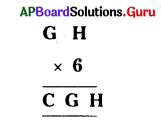 then H = ?
then H = ?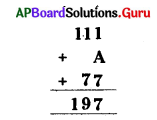 In this A = ……………..
In this A = ……………..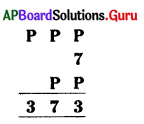 In this P = ………………..
In this P = ………………..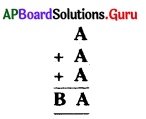 In this A = …………………
In this A = …………………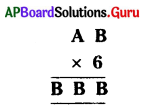 In this A = ………………
In this A = ……………… In this A = ……………
In this A = ……………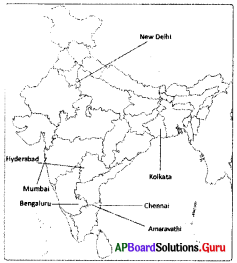
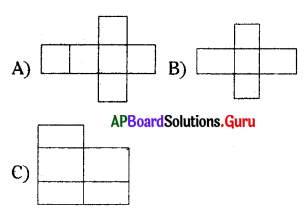
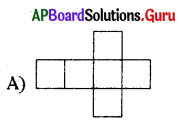
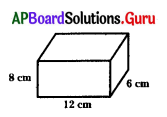

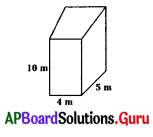
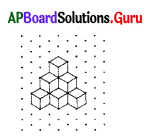
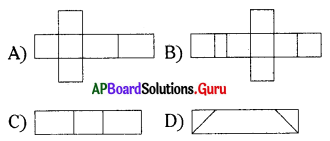
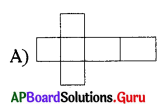

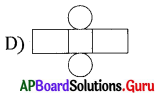

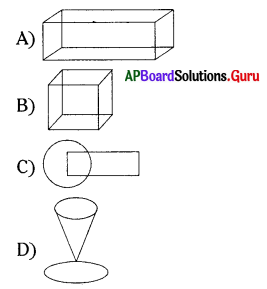

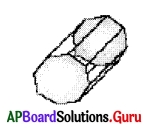



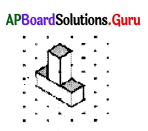
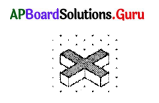
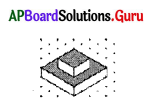
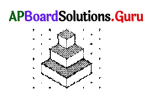
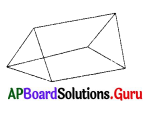
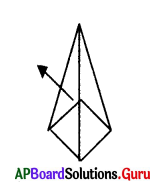
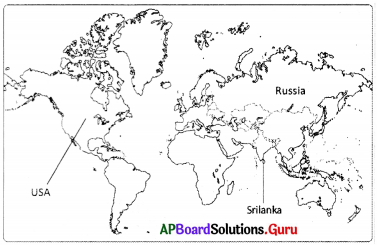
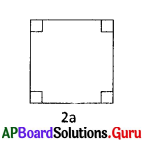
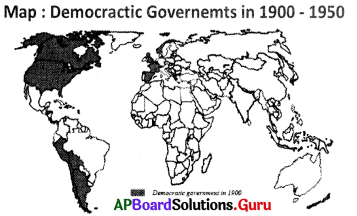
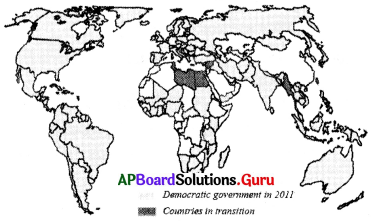
 Number of triangles in the figure is …………………
Number of triangles in the figure is ………………… Number of rectangles in the figure is …………………
Number of rectangles in the figure is ………………… Number of Trapeziums in the figure is ………………….
Number of Trapeziums in the figure is ………………….
